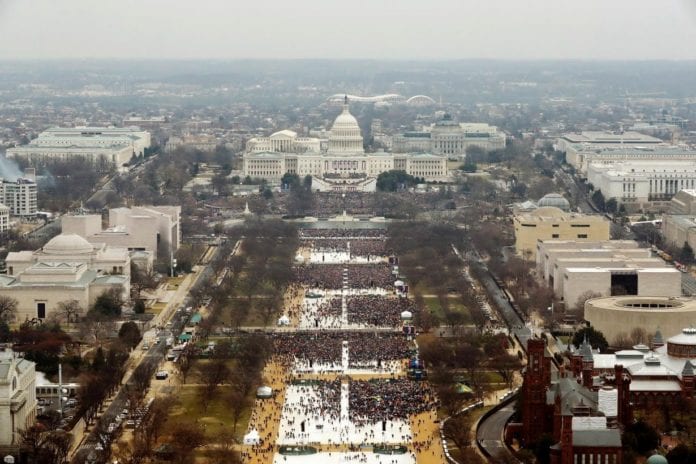Although the size of the crowd at President Donald Trump’s inauguration continues to be a source of contention between the new president and the press, testing by Global Wireless Solutions at least showed some definitive numbers for the cellular network support of the crowd. The benchmarking firm concluded that A&T Mobility’s coverage at the National Mall and along the inaugural parade route was the best.
“People attending the inauguration were sharing their own experience by posting pictures, videos or simply talking to friends and families,” said Paul Carter, CEO of GWS, in a statement. “Providing fast and reliable wireless service was a challenge for the mobile operators given that thousands of users were on their phones in the same area at virtually the same time. In order to meet this unusual demand in service, the operators had to go the extra mile to prepare and bolster their networks, and our tests showed that for the most part this challenge was met.” Carter also described the inauguration as “perhaps the most significant political and social event experienced online.”
Financial Times initially estimated the crowd at around 250,000 people for the inauguration. The New York Times hired crowd-estimation experts who later pegged the number at around 160,000 people in attendance. President Trump has said he thought it was 1.5 million people. Inauguration organizers were expecting approximately 1 million people to be in attendance, including protesters. CNN has put up a interactive gigapixel image of the inauguration here. Pictures by Reuters from the top of the Washington Monument have also added to the debate over exactly how large the crowd was. But carriers definitely had heavy lifting to do in terms of capacity, and they prepared for it with a combination of cell-on-wheels units, optimizing antenna tilts, carrier aggregation and leveraging more spectrum.
GWS had testing teams at sites on the National Mall and along the parade route and said it conducted about 15,000 voice and data tasks between 10 a.m. and 5 p.m. on inauguration day (the swearing-in was conducted at noon). GWS used Samsung Galaxy S7 smartphones with its mobile diagnostic app to test the performance of AT&T Mobility, Sprint, T-Mobile US and Verizon Wireless’ networks for completing tasks like making a phone call, uploading a video or sending a Snapchat.
GWS said AT&T Mobility ranked first in all of its OneScore metrics, including overall reliability for both voice and data, overall packet data speed and reliability and social media tasks. Verizon Wireless placed second overall, followed by T-Mobile US and Sprint. On the National Mall, GWS reported, AT&T Mobility’s throughput was, on average, double or more that of its competitors. Sprint, meanwhile, failed more than four out of every 10 task attempts and T-Mobile US also had very low levels of task success, GWS said.
However, GWS also noted “as the focus moved from Mall to the parade route (along Pennsylvania Avenue), the performance variations tightened across the operators and T-Mobile and Sprint significantly improved their overall performance. In fact, T-Mobile ranked first in the GWS OneScore rankings for the post-inauguration parade.”

